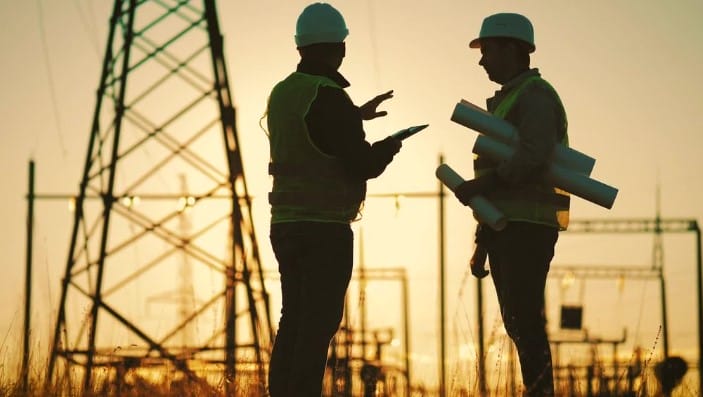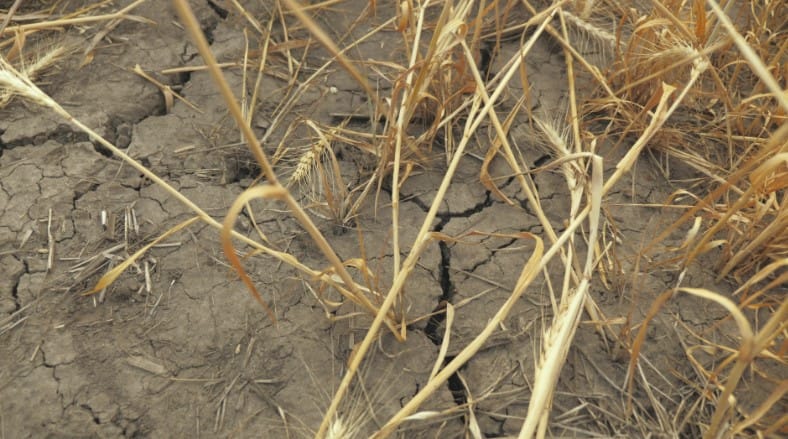 We have become a world that is overly dependent on profits for shareholders, supply chains that bring us cheap products and goods from around the world, and an ever-widening gap between the farm and your table. If we ran our households like this, we would be in bankruptcy court. The effects of running a country this way can only result in catastrophic failure or a violent reshaping and reformulation of our systems, wants, and needs. In many ways, the effects of running our society like this, redlining all the financial mechanisms, outsourcing, exports and tariffs, and so forth, force us to change how our households function. It directly impacts our way of life, going way beyond sticker shock.
We have become a world that is overly dependent on profits for shareholders, supply chains that bring us cheap products and goods from around the world, and an ever-widening gap between the farm and your table. If we ran our households like this, we would be in bankruptcy court. The effects of running a country this way can only result in catastrophic failure or a violent reshaping and reformulation of our systems, wants, and needs. In many ways, the effects of running our society like this, redlining all the financial mechanisms, outsourcing, exports and tariffs, and so forth, force us to change how our households function. It directly impacts our way of life, going way beyond sticker shock.
- Grocery prices skyrocket 11.9% as high inflation hovers
- U.S. household debt increased by $1 trillion in 2021, the most since 2007
- Many Americans Raid Retirement Savings to Stay Afloat
 Government borrowing and spending, worker’s being sick or refusing to work, the war in Ukraine, Chinese lockdowns, low-interest rates, corporate greed, and supply chain disruptions are all valid reasons for the current inflation we are experiencing. Inflation is approaching 10%, and on some items, prices have gone up much higher. It’s higher than it has been since 1981–41 years ago. There are many reasons for the increase, and we dive deeper into inflation in some of the other blogs on this site. Suffice it to say that the inflation we previously warned about for months is solidly here right now, and it will get a lot worse before it is over. Whether it gets 1970s bad remains to be seen, but the inflation of the 70s brought about several significant changes and reforms–not all of which proved to be good. In the 70s, the combination of high inflation with weak economic growth, fuelled by repeated supply shocks, gave rise to the phenomenon of ‘stagflation.’ Today, oil prices are, in real terms, still only around two-thirds of those in 1980 or 2008. Still, you wouldn’t know that looking at the numbers increase when you are pumping gas.
It’s important to understand that inflation is not a uniquely American problem. Global inflation is up 6% or more. Lockdowns, COVID responses, supply chain challenges that range from weather to cargo ships stuck in the Suez Canal, embargoes, nations hoarding grain and fuel, and a host of other conditions all combined to drive up costs and cause wide disparities and price jumps.
ENERGY
Government borrowing and spending, worker’s being sick or refusing to work, the war in Ukraine, Chinese lockdowns, low-interest rates, corporate greed, and supply chain disruptions are all valid reasons for the current inflation we are experiencing. Inflation is approaching 10%, and on some items, prices have gone up much higher. It’s higher than it has been since 1981–41 years ago. There are many reasons for the increase, and we dive deeper into inflation in some of the other blogs on this site. Suffice it to say that the inflation we previously warned about for months is solidly here right now, and it will get a lot worse before it is over. Whether it gets 1970s bad remains to be seen, but the inflation of the 70s brought about several significant changes and reforms–not all of which proved to be good. In the 70s, the combination of high inflation with weak economic growth, fuelled by repeated supply shocks, gave rise to the phenomenon of ‘stagflation.’ Today, oil prices are, in real terms, still only around two-thirds of those in 1980 or 2008. Still, you wouldn’t know that looking at the numbers increase when you are pumping gas.
It’s important to understand that inflation is not a uniquely American problem. Global inflation is up 6% or more. Lockdowns, COVID responses, supply chain challenges that range from weather to cargo ships stuck in the Suez Canal, embargoes, nations hoarding grain and fuel, and a host of other conditions all combined to drive up costs and cause wide disparities and price jumps.
ENERGY
 We are overly dependent on energy. At the same time, our infrastructure and power grid are strained and old, our use and consumption and population have all increased, and our needs to heat and cool under extreme weather conditions have intensified. It’s all a recipe for disaster. Power companies have directly warned that production will not meet demand this summer. We have been warned that hydroelectric production will be down. We have been warned that demand will outpace supply. We have been warned that the heatwaves we can expect through summer will tax the system significantly. But do we heed those warnings?
Energy prices are projected to increase 50% this year after doubling last year. Expect this crisis to worsen over the next two years, at least. Analyze your emergency energy needs. Consider a solar battery or fuel-generator to get you through short periods of the power going out, but don’t be naive to think the power won’t go out. It will, and if it doesn’t impact you too much because you are prepared, realize that it will affect the millions of businesses, services, and people around you. You won’t be buying groceries, visiting the doctor, or pumping expensive gas when your city’s power goes out.
FUEL
We are overly dependent on energy. At the same time, our infrastructure and power grid are strained and old, our use and consumption and population have all increased, and our needs to heat and cool under extreme weather conditions have intensified. It’s all a recipe for disaster. Power companies have directly warned that production will not meet demand this summer. We have been warned that hydroelectric production will be down. We have been warned that demand will outpace supply. We have been warned that the heatwaves we can expect through summer will tax the system significantly. But do we heed those warnings?
Energy prices are projected to increase 50% this year after doubling last year. Expect this crisis to worsen over the next two years, at least. Analyze your emergency energy needs. Consider a solar battery or fuel-generator to get you through short periods of the power going out, but don’t be naive to think the power won’t go out. It will, and if it doesn’t impact you too much because you are prepared, realize that it will affect the millions of businesses, services, and people around you. You won’t be buying groceries, visiting the doctor, or pumping expensive gas when your city’s power goes out.
FUEL
 We have delved into the energy issue quite a bit in some other blogs. Suffice it to say that this isn’t a problem we can simply drill our way out of, regardless of what politicians and pundits might tell you. Drilling contracts were up 34% last year over the numbers five years ago. Permission to drill, actual drilling, and where that oil, if ever pumped out of the ground, ends up, how it is refined, and how it is distributed are all messes along the way to the gas you pump in your vehicle by the gallon. One thing is for sure, oil companies ship the oil to the highest paying nation. The same is true for coal. The same is true for liquid natural gas. This year oil company profits are up 300%. The industry has always been boom or bust; they’re barely making a profit over a ten-year benchmark. There are some legitimate reasons for the increases, but there is also an opportunity to make money for shareholders. Exxon Mobil, for example, is doing a $30 billion stock buyback, which won’t lower the gas price by even a penny, but will make their largest shareholders even wealthier.
Expect gas to go way up from here. Ten dollars a gallon gas isn’t improbable. That will translate to a price increase for goods transported more than 100 miles. That is, honestly, almost everything you buy. Look at our other blog that examines the ramifications of this fuel price crisis even further.
FOOD
We have delved into the energy issue quite a bit in some other blogs. Suffice it to say that this isn’t a problem we can simply drill our way out of, regardless of what politicians and pundits might tell you. Drilling contracts were up 34% last year over the numbers five years ago. Permission to drill, actual drilling, and where that oil, if ever pumped out of the ground, ends up, how it is refined, and how it is distributed are all messes along the way to the gas you pump in your vehicle by the gallon. One thing is for sure, oil companies ship the oil to the highest paying nation. The same is true for coal. The same is true for liquid natural gas. This year oil company profits are up 300%. The industry has always been boom or bust; they’re barely making a profit over a ten-year benchmark. There are some legitimate reasons for the increases, but there is also an opportunity to make money for shareholders. Exxon Mobil, for example, is doing a $30 billion stock buyback, which won’t lower the gas price by even a penny, but will make their largest shareholders even wealthier.
Expect gas to go way up from here. Ten dollars a gallon gas isn’t improbable. That will translate to a price increase for goods transported more than 100 miles. That is, honestly, almost everything you buy. Look at our other blog that examines the ramifications of this fuel price crisis even further.
FOOD
 World leaders, farmers, and truckers form lofty analyzers of data to tires on the road, truckers and hands in the dirt farmers are all warning us of the coming food crisis. One recent subscriber who farms in northwest Oklahoma commented: “We just started our wheat harvest two days ago (We’re on a combine as we type this). It was so dry here over the winter that our wheat is not good. There are areas of the fields we won’t be cutting because there is nothing there. This will be one of the worst harvests we have been a part of.” Listen to the farmers, my friends.
The cost of putting food on your table through the traditional grocery store method will also increase. Food-at-home prices rose 11.9% over the past year — the largest 12-month increase since April 1979. I have said before that some solutions for you are to get more local with your foods, buy in bulk and take advantage of sales, form sharing community co-ops, build a year or more food reserve, and cook what you prep to make it part of your everyday diet, and to grow or produce some of what you produce. Even applying a few of those solutions to your daily life will lessen the problem’s impact, and the problem is shaping up to be the worst since the Green Revolution and modern farming.
Extreme weather and megadroughts will result in crop and herd die-offs. Growing schedules are out of whack, and the land is dry. The price of fertilizing and irrigating land has increased so much that some corporate farmers are choosing to rest their land and let it go fallow for a year until things look better. All the while, we have actual food shortages in some parts of the world and food hoarding activities in some countries. Expect world hunger to become a major issue again. Expect that getting food to your table will become increasingly more expensive, if not challenging.
SUPPLY CHAIN
World leaders, farmers, and truckers form lofty analyzers of data to tires on the road, truckers and hands in the dirt farmers are all warning us of the coming food crisis. One recent subscriber who farms in northwest Oklahoma commented: “We just started our wheat harvest two days ago (We’re on a combine as we type this). It was so dry here over the winter that our wheat is not good. There are areas of the fields we won’t be cutting because there is nothing there. This will be one of the worst harvests we have been a part of.” Listen to the farmers, my friends.
The cost of putting food on your table through the traditional grocery store method will also increase. Food-at-home prices rose 11.9% over the past year — the largest 12-month increase since April 1979. I have said before that some solutions for you are to get more local with your foods, buy in bulk and take advantage of sales, form sharing community co-ops, build a year or more food reserve, and cook what you prep to make it part of your everyday diet, and to grow or produce some of what you produce. Even applying a few of those solutions to your daily life will lessen the problem’s impact, and the problem is shaping up to be the worst since the Green Revolution and modern farming.
Extreme weather and megadroughts will result in crop and herd die-offs. Growing schedules are out of whack, and the land is dry. The price of fertilizing and irrigating land has increased so much that some corporate farmers are choosing to rest their land and let it go fallow for a year until things look better. All the while, we have actual food shortages in some parts of the world and food hoarding activities in some countries. Expect world hunger to become a major issue again. Expect that getting food to your table will become increasingly more expensive, if not challenging.
SUPPLY CHAIN
 Though we touch upon this with fuel, food, energy, and inflation, the supply chain needs its own category. Consumer demand temporarily but dramatically changed in 2021. This resulted in many retailers putting in huge orders to manufacturers. Then there was a resulting surplus as things corrected slightly. This is referred to as the bullwhip effect, and it can be seen all across the supply chain.
If a supply chain can be seen as a smooth body of water when functioning well, COVID lockdowns, extreme weather, shipping problems, a war in Ukraine, embargoes, a chip shortage, food shortages, worker shortages, soaring shipping rates, warehouses brimming then emptied, containers stacked up out at sea then no ships on the way and so many other factors are stones thrown into that smooth and placid body of water.
Expect this supply chain to continue to be tumultuous. Some consumers will turn towards more necessities, and others will seek higher-priced luxury and convenience items. The logisticians, manufacturers, and retailers will struggle to accommodate both, but this problem will persist for quite some time. You would be well served to stay ahead of the crowds and ensure your essentials are in order enough to get you through any future lapses in the flow of goods.
FAKE MONEY
Though we touch upon this with fuel, food, energy, and inflation, the supply chain needs its own category. Consumer demand temporarily but dramatically changed in 2021. This resulted in many retailers putting in huge orders to manufacturers. Then there was a resulting surplus as things corrected slightly. This is referred to as the bullwhip effect, and it can be seen all across the supply chain.
If a supply chain can be seen as a smooth body of water when functioning well, COVID lockdowns, extreme weather, shipping problems, a war in Ukraine, embargoes, a chip shortage, food shortages, worker shortages, soaring shipping rates, warehouses brimming then emptied, containers stacked up out at sea then no ships on the way and so many other factors are stones thrown into that smooth and placid body of water.
Expect this supply chain to continue to be tumultuous. Some consumers will turn towards more necessities, and others will seek higher-priced luxury and convenience items. The logisticians, manufacturers, and retailers will struggle to accommodate both, but this problem will persist for quite some time. You would be well served to stay ahead of the crowds and ensure your essentials are in order enough to get you through any future lapses in the flow of goods.
FAKE MONEY
 America’s buying power has declined steadily over the last several years and dramatically in the face of inflationary pressures. It’s not just your wallet impacted by the fiscal problems. The Fed has been printing money and dropping the interest rates so low to stoke the fires of the economy that these methods no longer work. 24% of all the dollars in the money supply were created in just the last 24 months, but the economy hasn’t produced more. It hasn’t sold more. It hasn’t been very productive at all. In fact, it has retracted significantly. None of the policies implemented cure the spending and debt problem.
It’s gotten worse, too. The Federal Reserve requires banks and other depository institutions to hold minimum reserves against their liabilities. Typically, the marginal reserve requirement equals 10 percent of a bank’s demand and checking deposits. That was suspended in 2020 to stoke the economy in the face of the COVID pandemic. It hasn’t been re-established. A lower reserve requirement means the Federal Reserve is pursuing an expansionary monetary policy. The lower reserve requirement means banks do not need to keep as much cash on hand. This gives them more money for consumer and business loans.
However, one bank lends out all its reserves in loans and to other banks, who then lend that out to others who lend that out, and so on until there are far more liabilities and no actual reserves. This increases the nation’s money supply, but it’s artificial. Think of it like maxing out all your credit cards, except when you reach the maximum, you just get an additional credit card and max that out too. The bills eventually come due, but you never had the money in the bank to pay the minimum payment anyways. When this crazy policy, along with the other monetary policies that have been implemented, all run their course, it will be a collapsing house of cards that will make 2008 look like a blip on historical charts.
GAPS WIDENING
America’s buying power has declined steadily over the last several years and dramatically in the face of inflationary pressures. It’s not just your wallet impacted by the fiscal problems. The Fed has been printing money and dropping the interest rates so low to stoke the fires of the economy that these methods no longer work. 24% of all the dollars in the money supply were created in just the last 24 months, but the economy hasn’t produced more. It hasn’t sold more. It hasn’t been very productive at all. In fact, it has retracted significantly. None of the policies implemented cure the spending and debt problem.
It’s gotten worse, too. The Federal Reserve requires banks and other depository institutions to hold minimum reserves against their liabilities. Typically, the marginal reserve requirement equals 10 percent of a bank’s demand and checking deposits. That was suspended in 2020 to stoke the economy in the face of the COVID pandemic. It hasn’t been re-established. A lower reserve requirement means the Federal Reserve is pursuing an expansionary monetary policy. The lower reserve requirement means banks do not need to keep as much cash on hand. This gives them more money for consumer and business loans.
However, one bank lends out all its reserves in loans and to other banks, who then lend that out to others who lend that out, and so on until there are far more liabilities and no actual reserves. This increases the nation’s money supply, but it’s artificial. Think of it like maxing out all your credit cards, except when you reach the maximum, you just get an additional credit card and max that out too. The bills eventually come due, but you never had the money in the bank to pay the minimum payment anyways. When this crazy policy, along with the other monetary policies that have been implemented, all run their course, it will be a collapsing house of cards that will make 2008 look like a blip on historical charts.
GAPS WIDENING
 U.S. household debt increased by $1 trillion in 2021. Many US households have tapped into savings and retirement plans to stay afloat or are turning to credit debt. Student loan debt is in the trillions. Mortgage interest rates have risen. Mortgage delinquencies have risen, bankruptcy filings have increased, and median home prices have soared far beyond previous bubbles, which has priced many entirely out of a future that includes the dream of home ownership. Foreclosures have surged 181% over last year, as COVID relief measures have expired. Expect that number to skyrocket over the coming months, enhanced by higher interest rates and inflation pressures.
The rate of job creation can’t keep pace. Also, the Federal minimum wage hasn’t increased since 2009, even in the face of all these problems and the rise in the cost of living. The American middle class is shrinking, and we are living in a lopsided economy where the rich are getting super-rich, and the rest are struggling to keep a roof over their heads, food on the table, and gas in their cars. Though economists have warned about the effects of this widening income disparity for years, the inevitable outcome is beginning to be realized in what is being called the Great Resignation. People are less willing to work when the result is barely scraping by. The end result is social disorder, and, historically, wide gaps like this have led to revolutions, governments collapsing, and, quite literally, heads rolling.
COMBATIVE POLITICS
U.S. household debt increased by $1 trillion in 2021. Many US households have tapped into savings and retirement plans to stay afloat or are turning to credit debt. Student loan debt is in the trillions. Mortgage interest rates have risen. Mortgage delinquencies have risen, bankruptcy filings have increased, and median home prices have soared far beyond previous bubbles, which has priced many entirely out of a future that includes the dream of home ownership. Foreclosures have surged 181% over last year, as COVID relief measures have expired. Expect that number to skyrocket over the coming months, enhanced by higher interest rates and inflation pressures.
The rate of job creation can’t keep pace. Also, the Federal minimum wage hasn’t increased since 2009, even in the face of all these problems and the rise in the cost of living. The American middle class is shrinking, and we are living in a lopsided economy where the rich are getting super-rich, and the rest are struggling to keep a roof over their heads, food on the table, and gas in their cars. Though economists have warned about the effects of this widening income disparity for years, the inevitable outcome is beginning to be realized in what is being called the Great Resignation. People are less willing to work when the result is barely scraping by. The end result is social disorder, and, historically, wide gaps like this have led to revolutions, governments collapsing, and, quite literally, heads rolling.
COMBATIVE POLITICS
 Arguments coming to blows between politicians on opposite sides of the fence isn’t new. The last time it really spilled over into the general population, we had a civil war. Some people think that the conditions might be ripe for such an event again. There is no doubt that the political divisions are deep. There is no doubting that every conflict with a manifesto has some tinge of politics wrapped up in it. There has also been talk of State’s rights and possible succession after each recent election.
Mainstream media just encourages these divisions, as do the politicians themselves. Some people will always take the rhetoric to a higher level. The incidents of violent altercations that were politically motivated that we have witnessed over the last several years will likely continue to intensify. Is more profound division possible? Are more violent encounters possible? Yes. It’s a powder keg, and the sparks required for an explosion are becoming more frequent and closer to that keg.
The U.S. Department of Homeland Security is warning of increased domestic violence, and we see those threats materialize in real-time as we head into midterm elections. These violent domestic flare-ups centered around political divisions are even more significant than the cyberattacks, terrorist threats, and foreign governments seeking to foment division and weaken the US’s standing in the world. However, all of these threats still exist.
RECORD-BREAKING WEATHER
Arguments coming to blows between politicians on opposite sides of the fence isn’t new. The last time it really spilled over into the general population, we had a civil war. Some people think that the conditions might be ripe for such an event again. There is no doubt that the political divisions are deep. There is no doubting that every conflict with a manifesto has some tinge of politics wrapped up in it. There has also been talk of State’s rights and possible succession after each recent election.
Mainstream media just encourages these divisions, as do the politicians themselves. Some people will always take the rhetoric to a higher level. The incidents of violent altercations that were politically motivated that we have witnessed over the last several years will likely continue to intensify. Is more profound division possible? Are more violent encounters possible? Yes. It’s a powder keg, and the sparks required for an explosion are becoming more frequent and closer to that keg.
The U.S. Department of Homeland Security is warning of increased domestic violence, and we see those threats materialize in real-time as we head into midterm elections. These violent domestic flare-ups centered around political divisions are even more significant than the cyberattacks, terrorist threats, and foreign governments seeking to foment division and weaken the US’s standing in the world. However, all of these threats still exist.
RECORD-BREAKING WEATHER
 The Indiana Michigan power company was working through the night this week to try and restore power to 40k customers after record-breaking winds disrupted power. Hydroelectric operators have warned that they will be forced to reduce output because of a record-breaking drought. A conglomerate of power companies just warned that blackouts and brownouts are possible for millions as they struggle to maintain power production through record-breaking heatwaves. Record-breaking straight-line winds up to 105 miles per hour reached from Kansas to Wisconsin, pushing waves of farmland topsoil across the horizon. Meanwhile, record-breaking Yellowstone floods have wiped out roads, bridges, cutoff towns, and stranded visitors. The deep south US is facing a heat dome this week with the potential for record-breaking temperatures.
Not just in the US but worldwide, “record-breaking” weather is exacting a hefty toll on our stable futures. More than half of Mexico faces moderate to severe drought conditions. The iconic Sriracha sauce has stopped production temporarily because the drought has severely impacted the harvest of peppers they source from Mexico. Nuevo León, a state in the northeast region of Mexico that is home to almost 6 million, has restricted water access for its citizens to just 6 hours between 4 AM and 10 AM. The extreme, record-breaking downpours last year in British Columbia washed out three major highways and cutoff 5 million people from essential goods flowing in from the Port of Vancouver. Severe rains and floods just hit southern China. Eighteen died in India and Bangladesh floods that left millions without homes.
You don’t have to look far to see that weather patterns are moving towards the extreme. There has always been extreme weather here and there, but we haven’t seen the “record-breaking” kind of extreme weather in so many places all at once. Things don’t appear to be getting calmer, either. Expect more “record-breaking” weather, and anticipate the impact it will have on your livelihood, nation’s economy, power, food, water, and every imaginable facet of your life.
WHAT YOU SHOULD DO
The Indiana Michigan power company was working through the night this week to try and restore power to 40k customers after record-breaking winds disrupted power. Hydroelectric operators have warned that they will be forced to reduce output because of a record-breaking drought. A conglomerate of power companies just warned that blackouts and brownouts are possible for millions as they struggle to maintain power production through record-breaking heatwaves. Record-breaking straight-line winds up to 105 miles per hour reached from Kansas to Wisconsin, pushing waves of farmland topsoil across the horizon. Meanwhile, record-breaking Yellowstone floods have wiped out roads, bridges, cutoff towns, and stranded visitors. The deep south US is facing a heat dome this week with the potential for record-breaking temperatures.
Not just in the US but worldwide, “record-breaking” weather is exacting a hefty toll on our stable futures. More than half of Mexico faces moderate to severe drought conditions. The iconic Sriracha sauce has stopped production temporarily because the drought has severely impacted the harvest of peppers they source from Mexico. Nuevo León, a state in the northeast region of Mexico that is home to almost 6 million, has restricted water access for its citizens to just 6 hours between 4 AM and 10 AM. The extreme, record-breaking downpours last year in British Columbia washed out three major highways and cutoff 5 million people from essential goods flowing in from the Port of Vancouver. Severe rains and floods just hit southern China. Eighteen died in India and Bangladesh floods that left millions without homes.
You don’t have to look far to see that weather patterns are moving towards the extreme. There has always been extreme weather here and there, but we haven’t seen the “record-breaking” kind of extreme weather in so many places all at once. Things don’t appear to be getting calmer, either. Expect more “record-breaking” weather, and anticipate the impact it will have on your livelihood, nation’s economy, power, food, water, and every imaginable facet of your life.
WHAT YOU SHOULD DO
 So, with inflation going vertical, debt skyrocketing, fake money being produced, energy supply and demand sputtering towards total failure, increasing and sometimes violent, political divisions, record-breaking weather patterns, and we only need a little bit more tightening for the wound spring that is our economy to fall apart and unravel entirely. That push could be a natural disaster, war, or political conflict, or it could just be a continued strain from these pressures. We are stretched pretty thin and wound pretty tightly right now.
Strengthen your food, water, energy, medicine, and essential preps. I’m going to mention several videos right now and we’ll post links to them below. We encourage you to watch my video on “How to easily build a 2-week emergency food supply.” Some of the foods we mention there are already costing more or are under a supply threat. Once you have that in place, you will have the essential nutrition you need to make it through short-term disasters that could occur. You could then move to my video, the “Ultimate Guide for How to Build 1 Year of Food Storage.” Finally, watch my video “8 Best Water Storage Options for Emergencies” and apply what you learn there to your preps. If you just tackle the significant problems of food and water, your odds of successfully overcoming the challenges we are staring at in our future go way up. If we are 5-years down the road and you never need to solely rely upon your stored water or your long-term stored food, and I hope you don’t have to, you will have at least secured peace of mind for yourself. But, if you need to draw upon your emergency food or water even once during that 5-years, you will be thankful that you took the time to get your prepping house in order.
As always, stay safe out there.
So, with inflation going vertical, debt skyrocketing, fake money being produced, energy supply and demand sputtering towards total failure, increasing and sometimes violent, political divisions, record-breaking weather patterns, and we only need a little bit more tightening for the wound spring that is our economy to fall apart and unravel entirely. That push could be a natural disaster, war, or political conflict, or it could just be a continued strain from these pressures. We are stretched pretty thin and wound pretty tightly right now.
Strengthen your food, water, energy, medicine, and essential preps. I’m going to mention several videos right now and we’ll post links to them below. We encourage you to watch my video on “How to easily build a 2-week emergency food supply.” Some of the foods we mention there are already costing more or are under a supply threat. Once you have that in place, you will have the essential nutrition you need to make it through short-term disasters that could occur. You could then move to my video, the “Ultimate Guide for How to Build 1 Year of Food Storage.” Finally, watch my video “8 Best Water Storage Options for Emergencies” and apply what you learn there to your preps. If you just tackle the significant problems of food and water, your odds of successfully overcoming the challenges we are staring at in our future go way up. If we are 5-years down the road and you never need to solely rely upon your stored water or your long-term stored food, and I hope you don’t have to, you will have at least secured peace of mind for yourself. But, if you need to draw upon your emergency food or water even once during that 5-years, you will be thankful that you took the time to get your prepping house in order.
As always, stay safe out there. 
